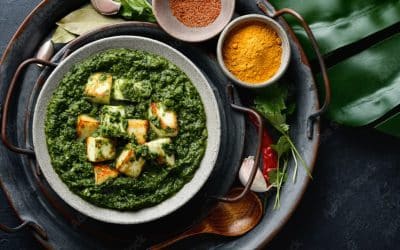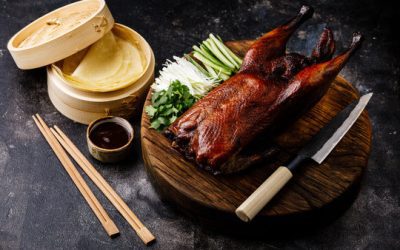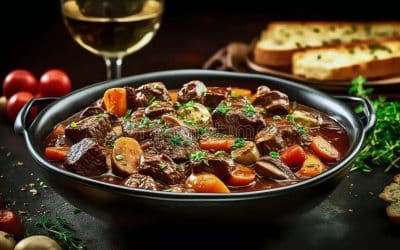France has an age-old tradition of culinary excellence, which has set the standard for chefs worldwide. The special thing about French cuisine is the expertise needed to create its dishes. France is renowned for its exquisite culinary tradition.
Emphasis on Fresh, High-Quality Ingredients
The foundation of French cuisine is its ingredients. Freshness is paramount. French cooking is all about using the best ingredients. This means fresh veggies from the garden, the latest seafood catch, or meat from a reliable nearby butcher. The French really care about where their ingredients come from and usually prefer stuff from their local area or region. The belief is that better ingredients make better food.
Mastery of Techniques
What sets French cuisine apart is the skill required to make many of its dishes. Techniques like poaching, flambéing, and sautéing have their roots in France. French culinary students spend years perfecting these techniques. The meticulous attention to the methods ensures consistency and a high level of standard in dishes.
Layering of Flavors
French dishes often involve a series of processes that add multiple layers of flavor to a dish. Broths are cooked slowly over time, sauces are cooked down until they’re just right. Ingredients are picked either to match well together or to stand out from each other. This layering results in rich, deep flavors that are characteristic of French dishes.
The Art of Sauces
Perhaps no other cuisine has given as much importance to sauces as the French have. From the velvety béarnaise and hollandaise to the dark and rich demi-glace, sauces play a starring role as they are are often the very essence of the dish. The five mother sauces – béchamel, velouté, espagnole, sauce tomate, and hollandaise – are the backbone of countless other sauces and dishes.
Presentation Matters
Eating with the eyes is a concept the French understand well. Presentation is a key element of French cuisine. The layout of the food, the garnishes, even the dishware are chosen with care. This attention to detail ensures that the dish isn’t just tasty but also visually elegant.
Regional Diversity
One of the key aspect of French cuisine is its regional diversity. From the hearty dishes of Alsace and the savory delights of Provence to the seafood centric cuisine of Brittany, every region contributes its culinary identity. Local ingredients and historical influences shape these regional cuisines, providing a wide range of flavors and techniques.
Pastry
French pastry is an art in itself. Items like croissants, éclairs, and macarons are very popular. These aren’t just desserts they are reflections of skill, technique, and precision. The flaky layers of a perfect croissant or the smooth filling of a macaron are the results of years of practice and perfection.
Popular French Dishes
Narrowing down a list of favorite dishes can be quite subjective due to the variety and quality of French cuisine. This list contains some iconic and beloved French dishes, presented in no particular order. This list does not represent all the delightful dishes from France by any means.
- Coq au Vin This classic dish features chicken cooked in red wine, often with mushrooms, onions, and bacon. It’s a hearty and flavorful dish with tender meat and a rich sauce.
- Croissant A quintessential French pastry, the croissant is a buttery, flaky delight enjoyed for breakfast or as a snack.
- Boeuf Bourguignon A slow-cooked beef stew that’s simmered in red wine with vegetables, resulting in tender meat and a deeply flavorful sauce.
- Escargot While perhaps an acquired taste, escargot refers to cooked snails usually prepared with garlic, butter, and herbs. They’re typically served as an appetizer.
- Bouillabaisse Originating from the Provence region, bouillabaisse is a fish stew made with a variety of fish and shellfish, flavored with herbs, saffron, and other spices.
- Cassoulet A hearty and comforting dish from the South of France, cassoulet is a slow-cooked casserole made with white beans, various meats (like sausage, pork, and duck), and often topped with breadcrumbs.
- Ratatouille A colorful vegetable medley stew made with eggplant, zucchini, peppers, tomatoes, and various herbs. It’s a staple of Provençal cuisine.
- Quiche Lorraine A savory tart made with a flaky pastry crust filled with a mixture of eggs, cream, cheese, and usually bacon or ham.
- Duck à l’Orange A dish that combines the richness of duck with the sweetness of orange sauce, creating a harmonious and flavorful pairing.
- Crème Brûlée A popular dessert consisting of a creamy custard base topped with a layer of caramelized sugar. It’s known for its contrasting textures of smooth custard and crunchy caramel.
- Onion Soup (Soupe à l’Oignon) A hearty soup made with caramelized onions and beef broth, usually topped with a layer of melted cheese and toasted bread.
- Foie Gras A luxurious delicacy made from the liver of a duck or goose, often served as a pâté or seared.
- Baguette The iconic French bread known for its crispy crust and soft interior. It’s a staple in French cuisine and is often enjoyed with meals.
- Salade Niçoise A refreshing salad originating from Nice, typically made with ingredients like tuna, hard-boiled eggs, olives, anchovies, and various vegetables.
- Macarons Delicate and colorful almond meringue cookies with a creamy filling, macarons are a beloved French sweet treat.
These dishes capture just a glimpse of the incredible variety and depth of French cuisine. Each dish reflects the country’s emphasis on quality ingredients, culinary techniques, and the art of savoring every bite.
Conclusion
Typical meals in France are often long, drawn-out affairs where people savor the food, enjoy conversation, and relax. French cuisine’s emphasis is enjoying the moment, the company, and of course, the food.
French cuisine is a celebration of culinary artistry. It’s a blend of tradition, technique, and a deep appreciation for the joys of eating. The characteristics of French cuisine, from its emphasis on fresh ingredients and technique to its regional diversity and global influence, make it a pillar of the culinary world.





0 Comments